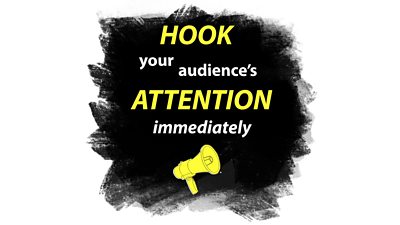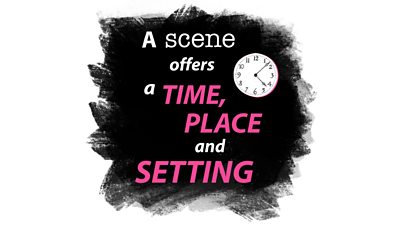You don’t need to know all the exact details of the ending, but you need to know where you are heading towards, what kind of ending you are trying to reach – whether tragic, comic, romantic, thrilling, horrifying, bittersweet, ambiguous. Knowing where you are going means you can work out the best, most engaging, most captivating, most meaningful place to start.
Getting the story started means hooking the audience’s attention immediately and hitting the ground running. This doesn’t mean an action sequence – it means starting the story straight away by showing characters in action, and by showing who the characters are by what they do.
Don’t worry about prefacing the story, or trying to ‘set it up’, or introducing the characters artificially – unless a ‘once upon a time’ narration is the kind of device you really want and need to use. Don’t get bogged down in the backstory – in explaining and relating what happened before we started watching. If there’s something important we need to know about the past, bring it into the present-tense action and drama of the story.
Don’t try to do too much. Find a focused way in – you don’t have to introduce every character, every theme, every plot straight away. Bring them in when you really need them to move the story forward, to surprise the audience, to step it up (or down) a gear.
But do something significant in the beginning – or the opening ‘act’ – of your story. Make your characters step outside their comfort zone. Make them want something and pursue it. Set them a problem or dilemma. Make their world different. Give them some kind of call to action – whether it’s to keep a small thing secret or to go out and save humanity.
Most importantly, plan the story before you start writing. Make sure you know what the beginning, middle and end are. Plan what happens in them. Work out what pieces of the jigsaw you need, and the order in which you want the audience to piece them together. But stand back, look at your characters, and ask whether they are driving it all forward – because when plotting seems to be taking over from the characters, then something is usually going wrong.
What kind of effect are you trying to have on the audience with your ending? Does it follow from where you started and the journey you’ve taken us and the characters on?
Great endings somehow feel inevitable – they are what should follow-on from everything that has gone before. Yet they must also not be predictable – if we can simply see what’s happening and predict how we’re going to get there, then there’s no surprise along the way. So does the ending truly deliver what you set up at the start? But does it also come in a surprising and somehow unpredictable way?
Great endings satisfy the audience – but satisfying them doesn’t mean simply making them happy and being obvious. Satisfaction means following through, it means not having frustratingly open or ambivalent endings, it means not tacking on a car chase or a plot ‘twist’ to make things exciting, it means bringing events and story to a meaningful climax, it means bringing drama characters to a point of understanding and realisation about themselves, it means keeping comedy characters somehow trapped by their shortsightedness.
Great endings fit. Bad endings jar. Great endings bring the story to the boil and then deliver. Bad endings go off at tangents or fizzle out or just stop without any real sense of conclusion or satisfaction. Great endings have an impact. Bad endings implode.
Bad endings forget the audience. Great endings respect the audience.








